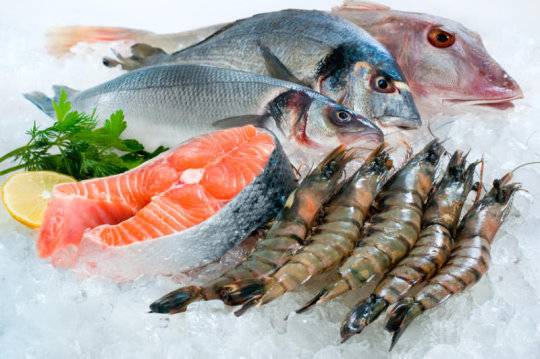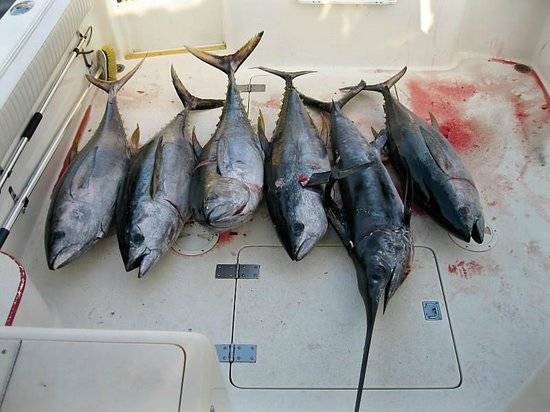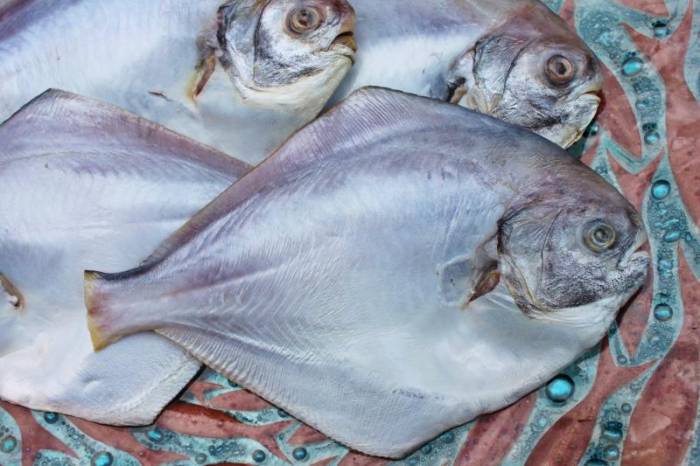We all know that fish is both delicious and healthy. However, there are certain fish that will do you more harm than good.
9 Types Of Fish You Should Never Consider Eating Here Is Why
They are high in many nutrients that most people aren't getting enough of.
This includes high-quality protein, iodine and various vitamins and minerals. However, some fish are better than others, and the fatty types of fish are considered the healthiest. That's because fatty fish (like salmon, trout, sardines, tuna, and mackerel) are higher in fat-based nutrients. This includes the fat-soluble vitamin D, a nutrient that most people are deficient in. It functions like a steroid hormone in the body.

Fatty fish is also much higher in omega-3 fatty acids.
These fatty acids are crucial for your body and brain to function optimally and are strongly linked to reduced risk of many diseases. To meet your omega-3 requirements, eating fatty fish at least once or twice a week is recommended.

Omega-3 fatty acids found in fish have been linked to
lower blood pressure
lower heart rate
lower risk of death from heart disease
lower risk for stroke
lower risk for depression
lower risk for some cancers

Fish consumption is especially important for women who are pregnant or want to have a baby
Because it provides the omega-3 fatty acid, DHA, which encourages healthy brain development of babies.

But some fish are sadly said to be on the "Do Not Eat List" because of the concern over mercury.
Mercury poisoning is still a concern when it comes to fish consumption, but there are ways to mitigate this risk.

What is mercury?
Mercury is naturally occurring element in the Earth's crust that is released into the environment with natural events such as volcanic activity. Mercury commonly occurs in three forms: elemental, inorganic and organic.

When mercury is released into the atmosphere, it is dissolved in freshwater and seawater.
A type of mercury called methylmercury is most easily accumulated in the body is and is particularly dangerous. About 80 to 90 percent of organic mercury in a human body comes from eating fish and shellfish, and 75 to 90 percent of organic mercury existing in fish and shellfish is methylmercury, according to a paper published by the Journal of Preventative Medicine and Public Health.

Negative health effects from methylmercury may include neurological and chromosomal problems.
According to the NIH, long-term exposure to organic mercury can cause:
uncontrollable shaking or tremor
numbness or pain in certain parts of the skin
blindness and double vision
inability to walk well
memory problems
seizures
death with large exposures

Fish Toxicity Levels from Lowest to Highest
With so many scares about mercury, farmed fish, radiation leakage, and parasites, it’s not easy to know whether you’re eating toxic fish or a non-toxic one. Here’s your how-to guide for avoiding toxic fish and getting the good stuff. And you’ll never have to be confused at the supermarket again!

Tuna
Tuna such as albacore have moderate mercury levels, so it’s not generally considered safe to consume excessively. Limit yourself to only a few ounces of tuna per week. Canned light tuna is the best kind to buy. (BPA-free can? Bonus!)

Tilapia
the most widely consumed fish in America. The problem with that? It contains very low levels of beneficial omega-3 fatty acids and, perhaps worse, very high levels of omega-6 fatty acids. That means the natural fish oil benefits found in this fish are not likely adequately boosting your omega 3s.
The low omega-3/high omega-6 ratio is a potentially dangerous food for people living with heart disease, arthritis, asthma and other allergic and autoimmune disease symptoms who are vulnerable to an exaggerated inflammatory response. This inflammation damages blood vessels, the heart, lung and joint tissues, skin and the digestive tract.

Catfish
Catfish can grow to considerable size. To accelerate their growth, many fish farmers feed them hormones, especially those fish imported from Asian countries. Free-grown catfish are much less dangerous and more nutritionally valuable. Imported catfish may contain antibiotics banned in food in the United States.

King mackerel
King mackerel tends to contain high levels of mercury.

Swordfish
Why it is bad: At. 976 ppm (parts per million), it has the most noteworthy mercury substance of any fish out there. The bio gathering of methylmercury is more awful the higher up the food chain that you go subsequently swordfish is genuinely awful on the grounds that it is higher up the food chain. The same contention can be advocated for shark and marlin. Mercury toxins must be made into bio-accessible methylmercury by anaerobic sulfur based microscopic organisms. These just exist in specific locales so if you can get swordfish that is a territory without the profound water sulfur based microorganisms then you can avoid the high contamination levels. The issue is that these anoxic districts are developing consistently because of hotter waters which convey less oxygen subsequently supporting anaerobic organisms over aerobic.

Orange Roughy
At .554 ppm, orange roughy is still very high in mercury toxicity. Like most deep sea dwelling fish, orange roughy take a long time to grow to maturity, and are easy to threaten with overfishing. Extensive deep sea fishing for over two decades resulted in severe depletion of adult stocks. Orange roughy do not generally breed until they reach 30 years of age. Scientists predict it could take decades for orange roughy populations to recover from heavy fishing which have decimated the species.

Salmon
Salmon is loaded with Vitamin D, B vitamins, omega-3s, protein, and antioxidants. Most salmon still contain trace amounts of mercury, so consuming this fish in excess isn’t a good idea. Wild-caught salmon is best as it’s the highest in omega-3s and nutrients!

Atlantic Cod
Although the female cod releases more than a hundred millions of eggs, only a few are able to survive to adulthood. According to Oceana, scientists agree that North Atlantic food webs have fundamentally changed as a result of the Atlantic Cod collapse, and the species is currently considered vulnerable to extinction.
If you’re a fan of cod liver oil, make sure it’s not sourced from Atlantic cod. The best cod source comes from Alaskan cod caught with a longline, pot or jig. (Call the manufacturer and ask how the fish is caught if it’s not apparent.) Just be aware this and other types of cod can be moderately high in mercury.

Flatfish (flounder, sole and halibut)
This group of fish incorporates flounder, sole, and halibut that are caught off the Atlantic coast. Despite the fact that struggle and sole have generally low levels of mercury, halibut still stays on the higher end at .252 ppm. Flatfish have discovered their direction onto the rundown on account of overwhelming defilement and overfishing that goes back to the 1800s. As per Food and Water Watch, populaces of these fish are as low as 1 percent of what is important to be viewed as maintainable for long-term fishing.

There is a disagreement about how much fish pregnant women should consume.
The Mayo Clinic recommends that women who are pregnant avoid eating any fish, while the FDA and the Environmental Protection Agency (EPA) recommend 12 ounces (340 g) per week. The 2010 Dietary Guidelines for Americans recommend 8 to 12 ounces (227 to 340 g) per week.

"Unless you get all your seafood tested, you cannot avoid mercury 100 percent," said Phillippi.
"However, you can significantly reduce your exposure by choosing species that are lower on the food chain. Fish like haddock, flounder, pollock, herring, as well as most shellfish, eat lower on the food chain and are therefore less likely to have much mercury in them."


